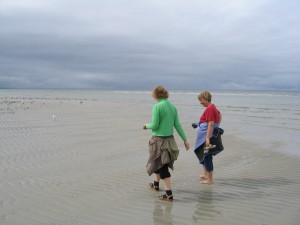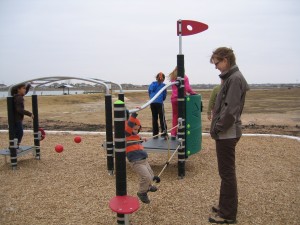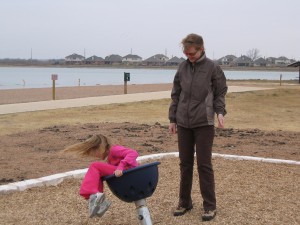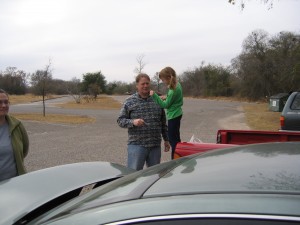 April 21, 2010
April 21, 2010
Communication and uncertainty go hand-in-hand. Many of our theories in communication focus on uncertainty as a reason to communicate. In these cases, we usually focus on communicating to reduce uncertainy. We talk about how we use cues from others–such as how they dress, the hair style they wear, the way that they gesture, and even how fast or slow they talk and their accent–to decide how much we are like another person. In these ways, we are using nonverbal information to reduce our uncertainty about talking with someone.
In already established relationships, we also experience uncertainty. Relational uncertainty may happen because we don’t know if our friend or family member is being ‘honest’ about whether they think we should take the job, go back to school, or in a million little day-to-day situations–like what to wear, what to eat, or what to do with our free time. We often try to reduce our uncertainty in these sitautions as well by communicating. ‘What do you want to do?’ ‘What are you doing to wear?’ ‘Do you think I should take this job?’ ‘What about the fact that we can’t sell the house right now?’ ‘They didn’t offer me any moving costs–can we afford it?’ So relational uncertainty emerges in a thousand different ways as part of having relationships. And it is a challenge to imagine how to balance the relationship needs and well, live our lives. So what happens when into the mix we introduce illness?
A diagnosis, whether it is terminal or not–as suggested by one of the participants in my last post–may spark the motivation to communicate. The diagnosis might be for a chronic condition such as heart disease, high blood pressure, high cholesterol, diabetes, or even HIV. It might be a broken leg or a sprained neck. Into each and every one of these and possibly thousands of other diagnoses enters uncertainty. “Illness uncertainty” is a big part of the uncertainy. But “relational uncertainty” is introduced into a diagnosis as well. To improve our communication about health, keeping both kinds of uncertainty in mind may help.
A diagnosis often leads us to want to reduce illness uncertainty about such things as ‘what is it,’ ‘what does it mean for my life,’ ‘how long will it last,’ ‘how will we treat it,’ and a host of other questions that may lead us to seek information to reduce our illness uncertainty. Sometimes, there will be no answers as we seek information, and so we have to “manage” our illness uncertainty by knowing that we have done what we could to answer our questions and perhaps by joining support groups online or in other ways putting ourselves in a position to keep up-to-date with any new information. What we don’t often think about is that in some situations, “increasing” our illness uncertainty may offer the most hope. As an emotion, hope let’s us look forward to a future that is a positive one and where we see ourselves able to achieve important goals. When we do not have certain information about our illness, that may provide a path toward hope if we frame it based on such comments as, “the doctor told me, ‘I don’t see any expiration date on you'”,–meaning that there is no answer to a question framed as, ‘how long do I have to live’.
In some of my past research, I have talked about the acute phase following a spinal cord injuury. During this phase, patients and families often are most reassured by communication that increases their uncertainty about the course of the diagnosis. Doctors not knowing whether a patient will walk again is a hopeful thing. At the same time that the patient and family experience hope related to increasing their illness uncertainty, they may experience sadness and fear and anger about a sense of increasing relational uncertainty. This is a case where friends and family may be very supportive in the beginning but seem to be less so over time. Communication may need to be more direct to reveal what is happening. If a friend asks, ‘what can I do for you?’ and the ansswer is always the same–‘nothing’–the friend may quit asking and quit coming around. There are many reasons that we don’t ask for help–and we can discuss those in the coming days–but if we remember that it may increase a friend’s uncertinaty about the relationship if we say ‘nothing’ and we obviously need help. And their lack of helping when we obviously need help may in turn increase our uncertainty about them. And both may contribute to illness uncertainty in negative ways–relating to a lack of tangible and emotional support–perhaps we can stop the spiral and communicate about our health and our relationship in more fruitful ways… not always to reduce uncertainty… but at least in ways to manage it.










 April 21, 2010
April 21, 2010